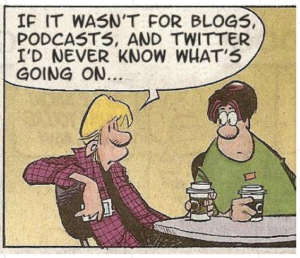Where do you get most of your news? Twitter? Facebook? For most of us, the internet and social media have become the first port of call when it comes to keeping up with the latest stories. I mean, when was the last time you bought a newspaper to get cutting-edge updates? Or waited until the 7 pm news to hear about what was going on in the country? Indeed, digital platforms offer us instant easy access to a plethora of information, stories and statistics, but how has this revolution affected journalists and South African newsrooms?

International research has shown the multiple intersecting ways that newsrooms and journalists have been affected by social media and the internet, and we wanted to find out if the same holds true for South African media. What changes have journos experienced with social media and digital technology? What challenges are they now facing in the constant onslaught of information and leads? And importantly for us, as MMA, we wanted to know how these changes have impacted the quality of stories being produced.
We interviewed editors and journalists at three leading South African newsrooms to hear about their experiences. We also monitored two key case studies over seven months (Farlam Commission, Xenophobic Attacks of 2015) to evaluate their quality. The report is a compilation of almost two years’ worth of hard work and our research reveals some key insights into modern newsroom processes as well as some of the points of resistance and opportunities to shift power and poor practice across South African media. It is critical that we continue to monitor our journalists to ensure that we realize the media necessary for an emerging democracy.
See: Media Monitoring Africa- Newsroom Research Report
Also published on “Investigative Journalism Education Consortium”



Comments are closed.